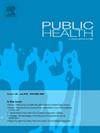Service redesign for outpatient services: Strategies to improve the wait
IF 3.9
3区 医学
Q1 PUBLIC, ENVIRONMENTAL & OCCUPATIONAL HEALTH
引用次数: 0
Abstract
Objective
To assess the effectiveness of a multicomponent waitlist optimisation strategy on the proportion of patients overdue to be seen for a neurosurgical (spinal pain) outpatient service at an Australian public hospital.
Study design
An interrupted time series study in the outpatient department of a tertiary referral hospital in New South Wales, Australia.
Methods
We implemented and evaluated nine waitlist optimisation strategies. We compared a Pre-implementation phase (January 2015–January 2016), a Implementation phase (February 2016–December 2017), and a Post-implementation phase (January 2018–January 2020). We included data from all adults who had been referred for neck and back pain. We used three outcomes of interest; they were: (i) the proportion of patients overdue to be seen (based on their triage category) for a given month, (ii) the proportion of patients that were waiting longer than one year for an initial appointment each month and (iii) the total neurosurgical waitlist number.
Results
We included data from 11,520 unique individuals who had a mean age of 54 years (SD 17), 51 % (5900) were female, and 8·8 % (1004) identified as Aboriginal and/or Torres Strait Islander. Across the three phases, there were 26,928 monthly data points Pre-implementation, 36,009 Implementation, and 15,326 Post-implementation. The trend in the proportion of patients overdue to be seen in the Post-Implementation phase was 7 % lower (OR 0·93 [95 % CI 0·89, 0·97]) compared to Pre-implementation.
Conclusion
The waitlist optimisation strategies tested in this study led to a large reduction in the proportion of patients overdue to be seen on the neurosurgical waitlist. The tested strategies can be used by other services to address extended waits in outpatient services.
门诊服务的重新设计:改善等待的策略
目的评估澳大利亚一家公立医院神经外科(脊柱疼痛)门诊病人逾期比例的多成分等候名单优化策略的有效性。研究设计:澳大利亚新南威尔士州一家三级转诊医院门诊部的中断时间序列研究。方法实施并评估9种候选名单优化策略。我们比较了实施前阶段(2015年1月- 2016年1月)、实施阶段(2016年2月- 2017年12月)和实施后阶段(2018年1月- 2020年1月)。我们纳入了所有因颈部和背部疼痛而就诊的成年人的数据。我们使用了三个感兴趣的结果;它们是:(i)给定月份逾期未见的患者比例(基于他们的分类),(ii)每个月等待首次预约超过一年的患者比例以及(iii)神经外科等待名单总数。结果我们纳入了来自11,520个个体的数据,这些个体的平均年龄为54岁(SD 17), 51%(5900)为女性,8.8%(1004)为原住民和/或托雷斯海峡岛民。在这三个阶段中,每个月有26,928个数据点,执行前有36,009个数据点,执行后有15,326个数据点。与实施前相比,实施后阶段逾期患者比例下降7% (OR 0.93 [95% CI 0.89, 0.97])。结论本研究中测试的等待名单优化策略导致神经外科等待名单中逾期患者比例大幅降低。测试策略可用于其他服务,以解决门诊服务的延长等待。
本文章由计算机程序翻译,如有差异,请以英文原文为准。
求助全文
约1分钟内获得全文
求助全文
来源期刊

Public Health
医学-公共卫生、环境卫生与职业卫生
CiteScore
7.60
自引率
0.00%
发文量
280
审稿时长
37 days
期刊介绍:
Public Health is an international, multidisciplinary peer-reviewed journal. It publishes original papers, reviews and short reports on all aspects of the science, philosophy, and practice of public health.
 求助内容:
求助内容: 应助结果提醒方式:
应助结果提醒方式:


